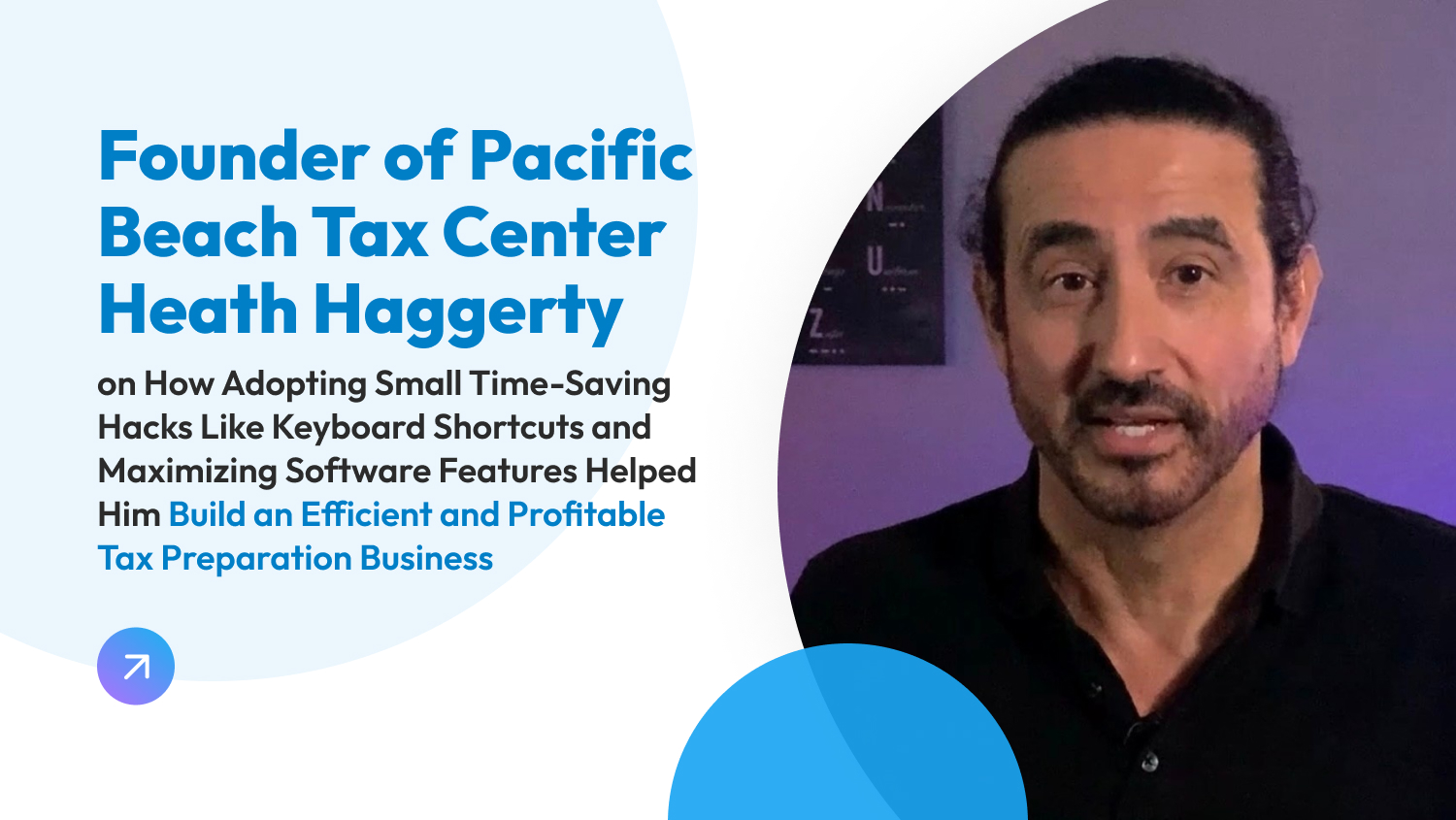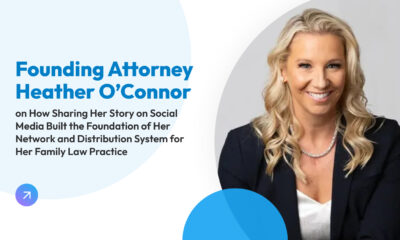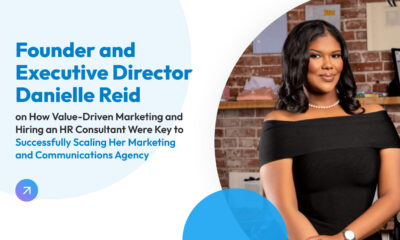Case Study
Founder of Pacific Beach Tax Center Heath Haggerty on How Adopting Small Time-Saving Hacks Like Keyboard Shortcuts and Maximizing Software Features Helped Him Build an Efficient and Profitable Tax Preparation Business
Five years in the Marine Corps, five years of study for an accounting degree, a year in public firm auditing, and about ten years as an accountant in small and big companies (while earning his CPA credentials), it took some time for Heath Haggerty II to figure out what he wanted to pursue and how to do it. But by persistently trying different opportunities, figuring things out on his own, and committing to a long-term goal of being his own boss, he found his way to setting up his own successful tax preparation business.
In this interview, Haggerty tells us about the challenges of starting, growing, and scaling his company, the Pacific Beach Tax Center, and the systems, tools, and people that helped him along the way. Don’t forget to check out his company’s Productivity Stack Quick Reference and his recommended Reading List at the end of the article!
Table of Contents
- Starting
- Growing
- Scaling and Success
- Hindsight: What Haggerty would have done earlier
- Advice from Haggerty: Never discount a contact and appreciate the simple things in life
- Wrap Up
- Haggerty’s Reading List
- Productivity Stack Quick Reference
- More About Heath Haggerty
Starting
Challenge 1: Figuring out how to work for himself
After serving in the Marines, Haggerty enrolled in college with a vague idea that he wanted to be involved in business or marketing. He signed up for an accounting class without really knowing what it was about. On the first day of class, when he heard the professor say being an accountant is an elitist profession, he decided this was the major for him.
But joining the working world after graduation, the reality of an accountant’s career was not quite what he expected. He struggled in his first job in audit at one of the prestigious Big Four accounting firms. He left after one year and bounced around different companies, taking on various accountant roles. Those early years working after college confirmed what he had an inkling of even in his time as a marine – he didn’t like taking orders, and he also didn’t like being an employee.
He tells us, “I knew at some point I had to figure out how to be my own boss. And I didn’t quite know the vehicle and what service I was going to provide.”
Solution: The idea of how he could exit employee life came to him around 2004 after he helped a manager with her tax returns. He recalls her saying, “You know, you’re pretty damn good at this. I think you found your niche.” And because he respected her and thought she was smart, those words were impactful. “That kind of just sparked a small thing in my brain. Because for me, it was sort of easy.”
Haggerty started doing tax preparation work on the side for family and friends. From 2009 to 2010, while working a full-time accounting job and running his side business, he worked on passing his Certified Public Accountancy exams. It was a big commitment that took him over a year to complete. But he wanted to elevate his professional credibility, and those exams taught him a lot about other aspects of business and finance.
A big break (and breakthrough) came soon after meeting a friend of a friend who ran a tax preparation business. Haggerty became friends with him, started asking him about his tax software, and took a chance on asking for an opportunity to learn about the business firsthand.
“I said, ‘Can I just come work for you for a tax season? I need to just see how this works.’ He hired me for a tax season, and I saw how he operated his tax office. That’s when I realized I can do this.”
People: Haggerty, former boss, family and friends, tax preparer who hired him for a tax season
Systems: Tapping your natural market, starting part-time to slowly build up as you learn business, applying for an ‘apprenticeship’ to learn the tax business
Tools: Job boards
Challenge 2: Getting used to uncertainty
It was a slow transition from deciding to work for himself around 2004 and launching a full-time business in 2013. Haggerty wasn’t immune to the fear and uncertainty of going from employment to entrepreneurship. Like many others about to take the leap into business, he worried about “How am I going to get paid? What happens when things get slow?”
Solution: Haggerty was able to save some money from some high-paying temp jobs he took right before he launched his business full-time. (The temp job opportunities came from chatting with someone at a bar one random night who introduced him to a temp agency recruiter — more on this in the section Advice from Haggerty).
His experience switching jobs over the years and running a tax business on the side also gave him a taste of the ups and downs of being self-employed. In between jobs, he would fall back on his part-time tax business. He shares, “I got used to [the uncertainty] because something would always come up. If I didn’t have any work, my tax work was done, and I was sitting there and didn’t have anything lined up, someone would call me, ‘Hey, I need you to do this. Hey, I need a tax guy.’”
He realized his service would always be in demand, even recession-proof, and that if he just focused on growing his business, he could make it. So in 2013, when he felt he had built a big enough practice, he made the commitment to go 100% into it. “If you’ve done all your prep work, you have some money saved, and you have backup, then you go for it. Once you decide, you really have to go in and fully do it.”
People: Haggerty, temp agency recruiter he got in touch with through someone he met at a bar, clients
Systems: Never discount a contact: being open to opportunities from your network, saving up prior to switching to business full-time, adapting to the seasonality of tax work
Tools: TurboTax (tax preparation software), small office for part-time tax business
Growing
Challenge 3: Distribution: Growing a client base for a full-time tax preparation business
Beyond family and friends, how did Haggerty find more prospects and grow his client base to support a full-time business?
Solution: Haggerty got a low-cost templated website built by CPA Site Solutions. He used Google ads once, which brought in a bunch of phone calls, but hasn’t spent any more than $1,500 in advertising since launching the business. He finds new clients primarily through referrals, and he believes his ability to gain people’s trust when he sits down with them is a big factor.
“I break it down to the ability to talk to people and listen and make them feel comfortable. I don’t ever pretend that I know everything. I’ve accepted that for myself, and I try to be honest with my clients. I try to approach each case as ‘What would I do if it was me.’ I have an ability to connect with people, and somehow they trust me, and then they tell their friends and their family, and it just blossomed.”
People: Haggerty, CPA Site Solutions, clients
Systems: Paid advertising, word-of-mouth marketing
Tools: Google ads, website
Challenge 4: Balancing client service and efficiency
While it is Haggerty’s time spent in conversations with clients and prospects that generate a good stream of referrals and new business, he needed to manage his time well so that he could sit down to do the actual tax work, and do it efficiently.
He shares a key idea he picked up from the book “How to Run Your Own Tax Practice,” which he read early on as he was contemplating going into business: “If you want to make money in this business, you’ve got to be aware of your time, and you’ve got to be efficient because obviously [time is] finite and you have to provide accurate, good quality service at the least amount of time. You don’t want to rush because that’ll affect your accuracy and your quality, so there’s a balance.”
Solution: Haggerty’s affinity for software and learning little time-saving hacks like keyboard shortcuts came into play. He had always been good at figuring out software and was diligent with self-study to make the most of accounting tools, even as an employee. As his business grew bigger, he got a better understanding of the systems and tools required and built the tech stack he needed.
Upon the recommendation of a fellow accountant (whom he met at a baseball game), he upgraded his firm’s tax preparation software from Turbo Tax to ATX and eventually to ProSeries. He taught himself to use these tools and continuously studied how to maximize them. “I know I’m still kind of scratching the surface with [ProSeries]. Every year, I learn something that saves me a lot of time. So I think just admitting to yourself that you don’t know everything about the software and trying is a big deal.”
He used to spend 30 minutes in back-and-forth emails setting appointments with clients. When he learned about Calendly, he connected it with his calendar and put a link on his website where clients could just make their own appointments.
To improve efficiency and security in file storage and sharing, he purchased Network Attached Storage, which is a separate piece of hardware that can hold documents and allow access to other devices on the same network. When this started getting too slow, he switched to Google Workspace, particularly Google Drive, Gmail, and Google Calendar.
In 2017, Haggerty started looking for a tool to save time organizing client documents. He used to write handwritten notes and stuff them in Manila folders for each client (or sometimes just rely on his memory!), which of course, got too difficult as his client base grew. He signed up for Canopy, which provides a full CRM solution with task management and client file storage.
People: Haggerty, acquaintance he met at a baseball game who introduced him to accounting software ATX
Systems: Focusing on process and system improvements, studying various tools to improve efficiency, actively seeking software solutions for efficiency improvement
Tools: How to Run Your Own Tax Practice, ATX, ProSeries, Google Workspace, Canopy, Calendly, Google Calendar, website
Scaling & Success
Challenge 5: Delegation: Hiring contractors and partners
About three years into his business, Haggerty started hiring contractors through Craigslist ads, primarily to help out with clerical work. But at some point, he felt like he needed full-time partners who could really be involved and help him expand the business.
Solution: Haggerty found the first partner while consulting with a client on their accounting processes and Quickbooks. He developed a good rapport with this client’s accountant, who was smart, capable, and seemed ready for a change in environment, so he invited her to work with him.
It wasn’t a quick transition because she had worked 15 years with her then-employer, and she would be leaving that certainty of a salaried job. After a series of negotiations, she decided to take the leap and became the first partner in Pacific Beach Tax Center.
The second partner was hired from a cold email. Haggerty recalls the message went something like, “Hey, I’m looking for some work. I’ve already passed a CPA exam.” That got his attention because he knew how difficult it was to pass the CPA exams. He quickly met with this applicant, who then joined them as the second partner in the Pacific Beach Tax Center. Their team of three has worked together very well since.
People: Haggerty, contractors, partners
Systems: Free advertising of contractual jobs on Craigslist, hiring after a period of working together or based on professional qualification
Tools: Craigslist, Gmail
Challenge 6: Adapting his work schedule to tax season
Tax preparation services hit peak demand from January to April, with a second wave from August to October. Haggerty tells us, “My dirty little secret is I probably only work about seven months out of the year. But during a tax season when it’s really busy, I just have to work. And it’s really stressful.”
The work is nonstop and intense during these periods. How does he manage the load during the busy seasons and what does work look like for the rest of the year?
Solution: During tax season, Haggerty makes sure to schedule some mini-breaks for self-care. “I have to take time to take care of myself. So I’ll go like, you know, maybe twice a month, I get a massage.”
And then he takes advantage of the off-season months to relax. “Because there’s no way I could work like that all year. No way, it wouldn’t work.” He takes a couple of weeks off from May to June, all of July, and a couple of weeks off in November and December. When he does work, he takes a more relaxed, intuitive approach to getting things done. As long as he doesn’t have client meetings, he tells us, “I work when I want to work and don’t work when I don’t want to work.”
He also devotes the off-season to working on the business and more creative projects – things like process improvements to make operations more efficient, business consulting, or online courses.
People: Haggerty
Systems: Adapting work calendar to the industry’s busy season, scheduling breaks to recover and sustain productivity for tax season, during off-season, working according to when energized to do it
Tools: ProSeries, Google Workspace, Canopy, Calendly, website, Google Calendar
Challenge 7: Managing email-induced anxiety
Haggerty admits one of the things he is still working on is timely communication. Because going through his email throws him off his planned daily schedule, he tends to avoid opening emails entirely.
In his words, “I have a deep disdain for email. When I go into my email in Google, I get anxious right away because I’ll see a bunch of unread [messages]. Then it just ruins my day because I have to start responding and then it takes me on this different path. I had planned to do these things today, but now my email has dictated that I need to do all this other crap.”
Solution: Haggerty has implemented a few workarounds to help with the email-induced distraction and anxiety. He doesn’t have the email app on his phone, he doesn’t open emails on his weeks off, and sometimes he allows certain clients to communicate directly via text message with him.
He has also integrated his email with their CRM Canopy. This way, he can look at communication with particular clients whom he scheduled to work on for that day without having to be confronted by his whole inbox. About two years ago, he also started scheduling an hour of twice-weekly general email checks.
He admitted that he isn’t very good at sticking to that schedule though. Staying on top of email communication is still a work in progress.
People: Haggerty
Systems: Limiting email checking time to focus on important tasks for the day, integrating customer emails with CRM to focus attention only on client work scheduled for the day
Hindsight: What Haggerty would have done earlier
Haggerty noted two things he would have done earlier: committing 100% to the business and hiring and training team members. He also highlighted how he would have approached networking and seeking a mentor differently.
He admits, “I’m a bit individualistic to a fault. I really had no mentor. I kind of had to just figure out this crap by myself. I would have maybe actively put myself in whatever tax preparation association or something like that where I could meet those people.”
Advice from Haggerty: Never discount a contact and appreciate the simple things in life
In spite of not being intentional in terms of networking, Haggerty credits many seemingly random encounters with people who helped him along his entrepreneurial journey. He told us how he landed the high-paying temp jobs that allowed him to save some money right before fully committing to his business.
“I remember walking into a bar one day, and I’m just sitting there, minding my own business, and there’s a guy sitting next to me, and he starts chit-chatting, and he goes, ‘I’m an accountant too. I’ve been doing these really good temp jobs. I have a guy who places me, and these are high-paying temp jobs.’
Days later, I’m working at Semper Energy, making a lot of money for a four or five-month temporary gig. That led to another temp gig with another big company for another ten months. When I look back, it probably slowed the growth of my tax work, but it was nothing I regretted because it was a really good experience, and I made good money.
And it all came about from just randomly meeting someone in a bar one night. That’s why I say, never discount a contact. Your network, never discount anybody in your network.”
The friend of a friend who let him work a season in his tax preparation business, the fellow accountant he met at a baseball game who told him about professional tax preparation software– these were not contacts he met under formal networking events. His openness to meeting new people and learning from them opened new opportunities and helped him move forward with his own business.
When asked about what he is looking forward to, Haggerty spoke more about things outside of his business – a new stationary bike for working out at home and being able to cook a nice dinner.
He says, “I’ve noticed that I’ve become more excited about mundane things as I get older. I’m excited about cooking, landscaping, basic things. People think you need to have all this stuff and success to be happy. And then when they get it, they’re kind of not happy. They realize it’s really the basic crap like, ‘Oh, I want to go out and sweep my deck in the morning because it makes me feel good.’”
Wrap Up
Haggerty’s success is the result of long-term commitment, small steps, and constant progress toward his goal over time. Once he decided to pursue something, even though the details weren’t too clear, he stuck with it and saw it through. We see this in how he completed his accounting degree, earned his CPA credentials, and eventually found a way to leave employee life and run his own business full-time.
His ability to connect with people has helped him not just win referrals but also made possible the many informal connections that have also contributed to building his tax practice. It certainly wasn’t a small favor to be hired for a tax season, brought along to meetings, and shown exactly how a tax preparation business works by someone who started out as a friend of a friend. Nor is it a small feat to convince an employee of 15 years to quit and join you as a business partner.
His focus on efficiency and process improvements has enabled him to build a sustainable and profitable business, as even the smallest changes have compounded into significant efficiency gains over the years. Maintaining that work-life balance, making time for mini-breaks even during tough tax seasons, and appreciating the simple things are part of his recipe for longevity in what can be a very high-stress business.
Haggerty is currently working on an online course designed for self-employed individuals or sole proprietors who need a crash course on how to handle their taxes. And he has committed to launching this before the next tax season, by November 2023! For starting entrepreneurs who want to get taxes right and don’t know where to begin, this is definitely a must-have.
Haggerty’s Reading List
- How to Run Your Own Tax Practice
- Tax Code for the United States
- IRS website
- Atomic Habits by James Clear
- No More Mr Nice Guy: A Proven Plan for Getting What You Want in Love, Sex, and Life by Dr. Robert A. Glover
- Declare War on Yourself by Marc Summers
- The Subtle Art of Not Giving A Fuck by Mark Manson
- How to Win Friends and Influence People by Dale Carnegie
Productivity Stack Quick Reference
Starting
- Job boards
- TurboTax
- Small office for part-time tax business
Growing
- Google ads
- Website
- How to Run Your Own Tax Practice
- ATX
- ProSeries
- Google Workspace
- Canopy
- Calendly
- Google Calendar
Scaling & Success
More About Heath Haggerty
Heath Haggerty II, CPA, is the founder of Pacific Beach Tax Center. He is a graduate of California State University San Marcos and a former Marine.
For tax consultations or to get help with a tax return, you can reach him through
Website: http://www.pbtaxcenter.com/
Facebook: Pacific Beach Tax Center
Instagram: pacificbeachtax
For tax education content and to find out more about his upcoming online course, follow:
Facebook: Haggerty Tax












